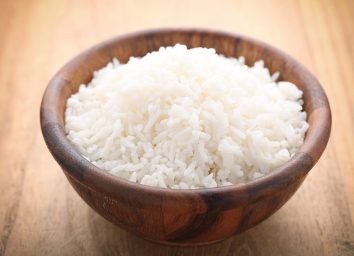Is Brown Rice Healthy? 8 Effects of Eating It
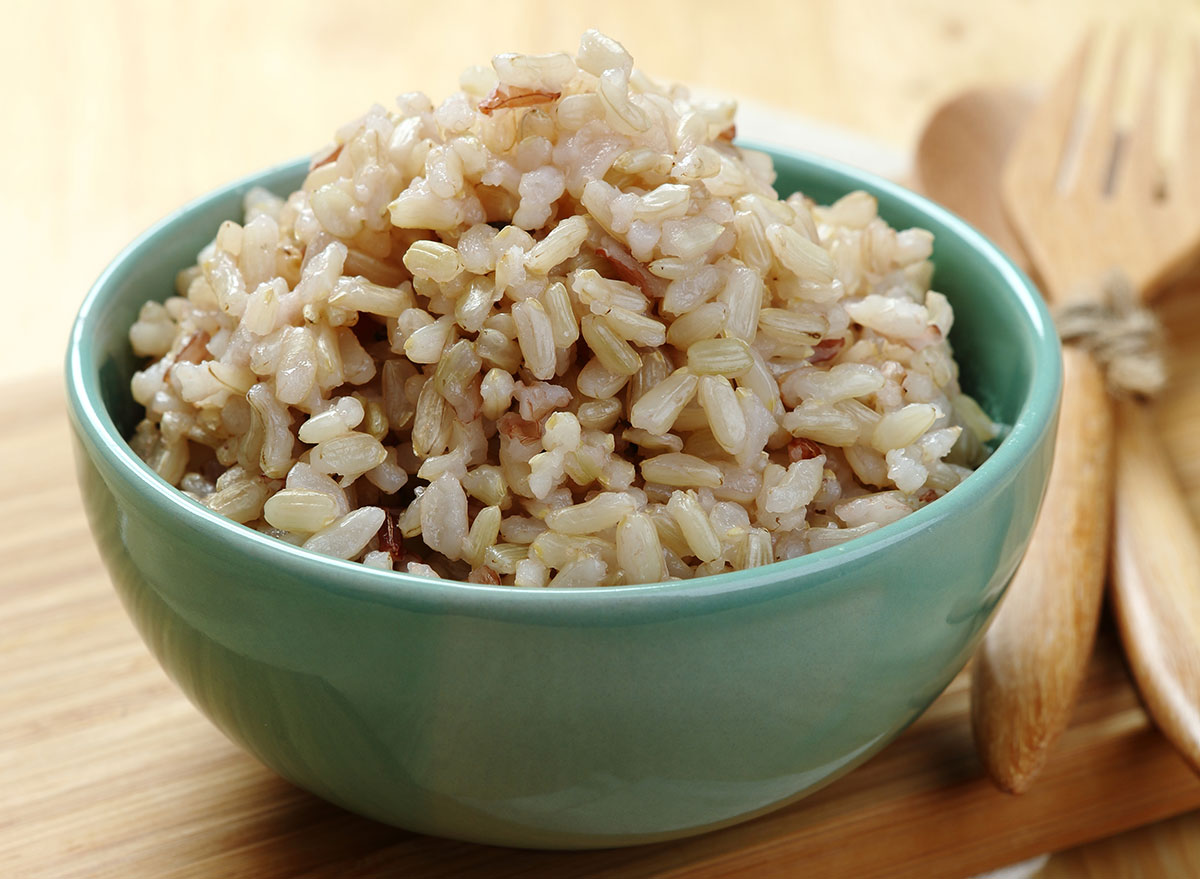
Rice is often feared for its carbohydrate content, but as a dietitian, I recommend brown rice as a nutritious staple for those seeking to improve their diet quality. Brown rice is a whole grain, meaning it contains all three parts of the grain: the fiber-containing bran, the nutritious germ, and the carb-rich endosperm. This makes it a valuable addition to a balanced diet, offering essential nutrients and promoting overall health. Whether enjoyed as a side, in a healthy stir-fry, or sushi, brown rice provides satiety, essential nutrients, and sustained energy levels.
While there are several benefits to eating brown rice, it may not be for everyone. Despite rice being inherently gluten-free, some individuals with a severe gluten allergy still should exercise caution when consuming it. Additionally, brown rice may contain high levels of arsenic, a toxic metal, which consumers should be mindful of. Later in the article, we'll explore these concerns in more detail.
So, what are some of the benefits and potential side effects of eating brown rice? Read on to find out.
You'll Eat More Fiber
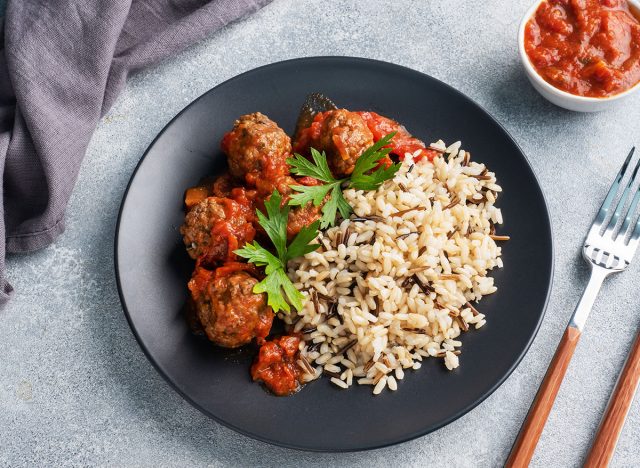
Compared to white rice, brown rice is higher in fiber, a nutrient most people don't get enough of. One cup of brown rice contains around 3 grams of fiber compared to around 0.5 to 1 gram per cup of white rice. This amount can help bump up your fiber intake along with the consumption of fruits, veggies, and other whole grains.
Eating more fiber is associated with healthy digestion, weight management, improved blood sugar control, lower cholesterol, cancer prevention, and more. Swapping white rice for brown rice is an easy way to boost your daily fiber consumption.
You'll Get More Antioxidants

Brown rice is rich in antioxidants, powerful compounds that protect cells from damage and can support healthy aging. These antioxidants help your body ward off unwanted toxins and decrease the risk of oxidative stress, an imbalance in the body that can damage organs over time.
Enjoying whole grains like brown rice, quinoa, oats, and whole wheat bread can help you get a variety of antioxidants for optimal health.
You May Lose Weight

Several studies have shown that people who eat more whole grains, like brown rice, tend to weigh less than those who eat fewer of them. Because brown rice contains the entire grain, it is nutritious and rich in fiber, which can keep you full for longer.
Eating less is easier when you feel full and satisfied, so eating whole grains like brown rice can help you stay within a calorie deficit for weight loss.
Your Heart Health May Improve
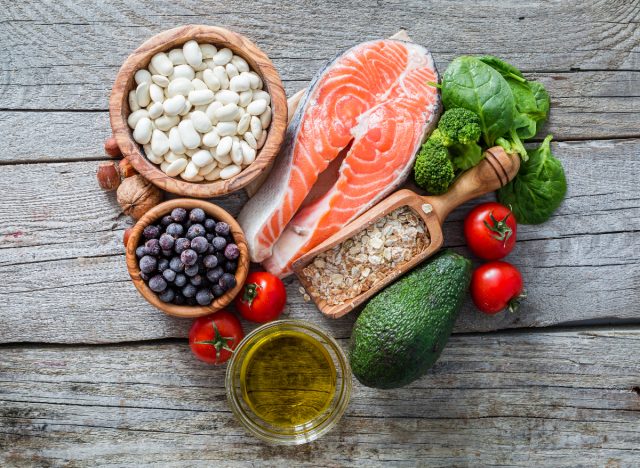
Eating more whole grains like brown rice may reduce risk factors for heart disease, such as high cholesterol levels. Based on an analysis of 45 studies, people who ate the most whole grains, including brown rice, had a 16-21% lower risk of heart disease than those who ate the fewest whole grains. This percentage is significant and nothing to throw under the rug.
Some studies have linked brown rice consumption to higher HDL (the "good") and lower LDL (the "bad") cholesterol levels, though more research is needed to confirm this connection.
Your Blood Sugar May Reduce
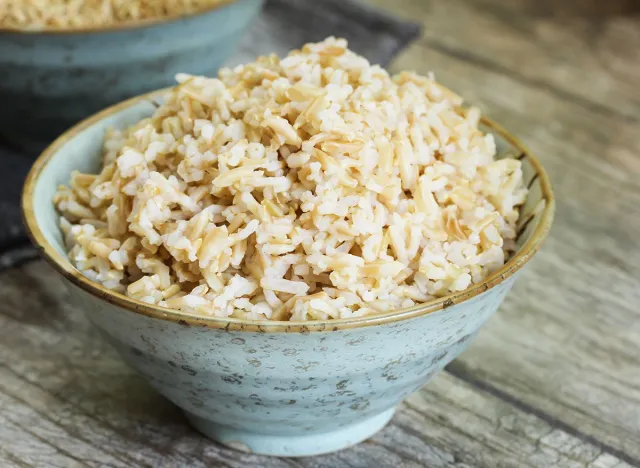
Despite what some anti-carb influencers tout, most people, even those with diabetes, can safely eat brown rice. It may even benefit blood sugar.
While brown rice is a carbohydrate that can increase blood sugar, as we've already established, it contains fiber, which slows down the release of sugar into the blood and reduces the amount of total carbohydrate absorbed. This can lead to fewer blood sugar spikes and better overall blood sugar management.
Swapping refined carbs like white rice and pasta for brown rice can help if you are trying to manage your blood sugar better.
You May Have an Allergic Reaction if You Have Celiac Disease

If you have Celiac disease, you may have trouble digesting brown rice. While brown rice is naturally gluten-free, it contains orzenin, a plant-storage protein component of gluten. It is rare for those with celiac to have an allergic reaction to orzenin found in rice, but there is still a slight risk if you are extra sensitive.
If you have celiac disease and consume gluten or gluten-containing components, you may experience side effects such as gastrointestinal distress, joint pain, or skin rashes.
If you are particularly sensitive to gluten and have been advised to avoid it completely, speak to an allergist or registered dietitian for further guidance.
You May Consume Some Arsenic

Brown rice is 1.5 times higher in arsenic than white rice, a heavy metal that can be toxic in large quantities.
While you don't need to avoid arsenic altogether, being cautious with foods high in arsenic is important. This is especially true if you are pregnant, where high arsenic exposure is associated with a higher risk of miscarriage and stillbirth.
There is also a potential risk for those who are breastfeeding, where infants can be exposed to high amounts of heavy metals, including arsenic, in breast milk. However, more research is needed into this connection and how much is considered too much.
Your Body May Absorb Fewer Nutrients

Brown rice contains an anti-nutrient called phytic acid, which reduces the absorption of important minerals like iron, calcium, and zinc. It's important to note that phytic acid only appears to reduce the absorption of these minerals at that meal where it is consumed, not in subsequent meals.
The good news is there are versions of brown rice that reduce this negative effect, such as sprouted brown rice. This form of rice is germinated, which helps to neutralize phytic acid, allowing you to absorb more nutrients in your brown rice.
- Source: https://pubmed.ncbi.nlm.nih.gov/31619639/
- Source: https://www.ncbi.nlm.nih.gov/pmc/articles/PMC10375490/
- Source: https://www.fda.gov/food/environmental-contaminants-food/what-you-can-do-limit-exposure-arsenic
- Source: https://www.ncbi.nlm.nih.gov/pmc/articles/PMC7589116/
- Source: https://www.ncbi.nlm.nih.gov/pmc/articles/PMC7589116/
- Source: https://pubmed.ncbi.nlm.nih.gov/33530093/
- Source: https://www.nature.com/articles/s41430-018-0295-7
- Source: https://www.ncbi.nlm.nih.gov/pubmed/24829736
- Source: https://pubmed.ncbi.nlm.nih.gov/27301975/
- Source: https://pubmed.ncbi.nlm.nih.gov/23930929/
- Source: https://www.ncbi.nlm.nih.gov/pmc/articles/PMC6316305/#:~:text=Prolamins%20are%20the%20main%20components,celiac%20and%20gluten%2Dsensitive%20patients.
- Source: https://www.ncbi.nlm.nih.gov/pmc/articles/PMC10375490/#:~:text=The%20data%20demonstrated%20that%20inorganic,the%20type%20of%20rice%20consumed.
- Source: https://www.ncbi.nlm.nih.gov/pmc/articles/PMC3179678/#:~:text=The%20metalloid%20arsenic%20is%20a,a%20constituent%20of%20consumer%20products.
- Source: https://www.ncbi.nlm.nih.gov/pmc/articles/PMC10734558/#:~:text=Pregnant%20women%20exposed%20to%20%3E100,weight%20%5B10%2C38%5D.
- Source: https://pubmed.ncbi.nlm.nih.gov/27619212/
- Source: https://www.ncbi.nlm.nih.gov/pmc/articles/PMC8746346/
- Source: https://pubmed.ncbi.nlm.nih.gov/33641749/
- Source: https://pubmed.ncbi.nlm.nih.gov/33374851/


